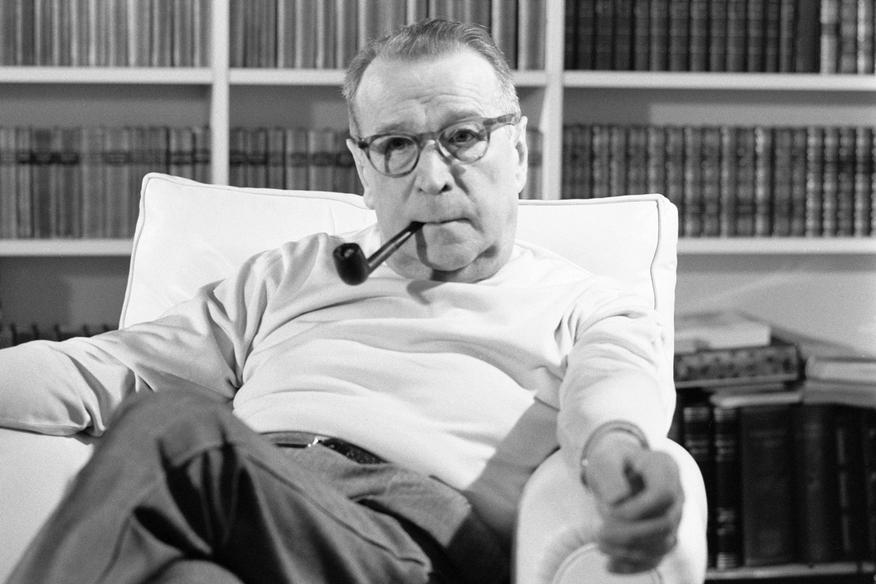
Crime in translation may be achieving massive breakthroughs in the 21st century, but long before this trend, one writer was a one-man Trojan horse for the field. George Joseph Christian Simenon was born in Liège on the 13th of February 1903; his father worked for an insurance company as a clerk, and his health was not good. Simenon found (like Charles Dickens in England before him) that he was obliged to work off his father's debts. The young man had to give up the studies he was enjoying, and toiled in a variety of dispiriting jobs (including, briefly, working in a bakery). A spell in a bookshop was more congenial, as Simenon was already attracted to books, and his first experience of writing was as a local journalist for the Gazette de Liège. It was here that he perfected the economical use of language that was to be a mainstay of his writing style, and Simenon never forgot the lessons he acquired in concision.
Even before he was out of his teenage years, Simenon had published an apprentice novel, and became a mainstay of an enthusiastic organisation styling themselves ‘The Cask’ (La Caque). This motley group of vaguely artistic types included aspiring artists and writers (along with assorted hangers-on). A certain nihilistic approach to life was the philosophy of the group, and the transgressive pleasures of alcohol, drugs and sex were actively encouraged, with winding-down periods in which these issues (and, of course, the arts) were hotly debated.
All of this offered a new excitement for the young writer after his sober teenage years. Simenon had always been attracted to women (and continued to be enthusiastically so throughout his life) and in the early 1920s he married Règine Renchon, an aspiring young artist from his own home town. The marriage, however, was not to last.
Despite the bohemian delights of the Cask group, it was of course inevitable that Simenon would travel to Paris, which he did in 1922, making a career as a journeyman writer. He published many novels and stories under a great variety of noms de plume.
Simenon took to the artistic life of Paris like the proverbial duck to water, submerging himself in all the many artistic delights (at a time when the city was at a cultural peak, attracting émigré writers and artists from all over the world), and Simenon showed a particular predilection for the popular arts, becoming a friend of the celebrated American dancer Josephine Baker after seeing her many times in her well-known showcase La Revue Nègre. Baker was particularly famous for dancing topless, and this chimed in with the note of sensuality that was to run through the writer's life. But as well as sampling the fleshpots (along with more cerebral pursuits), Simenon became an inveterate traveller, and in the late 1920s made many journeys on the canals of France and Europe.
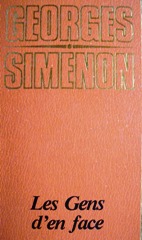 |
|
There was an element of real-life adventure in Simenon's life at this time, when he became an object of attention for the police while in Odessa (where he had made a study of the poor). His notes from this time produced one of his most striking novels, Les Gens d'en Face (1933), which was bitterly critical of the Soviet regime (which the author saw as corrupt). As the 1930s progressed, Simenon wrote several of the police procedural novels featuring doughty Inspector Maigret (his principal legacy to the literary world), but he did not neglect his world travels, considering that the more experience of other countries he accrued, the better a writer he would become. |
Like many Frenchmen, Simenon’s life was to change as the war years approached. In the late 1930s, he became Commissioner for Belgian refugees at La Rochelle, and when France fell to the Germans, the writer travelled to Fontenay. His wartime experiences have always been a subject of controversy. Under the occupation, he added a new string to his bow when a group of films was produced (under the Nazis) based on his writings. It was, perhaps, inevitable that he would later be branded a collaborator, and this stain was to stay with him for the rest of his career.
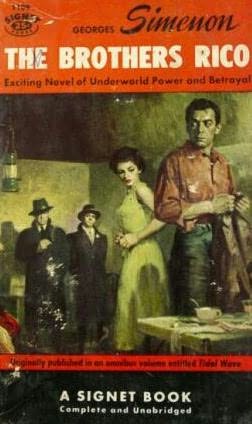 After the war, he decided to relocate to Canada, with a subsequent move to Arizona. The United States had become his home when he began a relationship with Denyse Ouimet, andhis affair with this vivacious French-Canadian was to be highly significant for him, inspiring the novel Trois Chambres à Manhattan (Three Rooms in Manhattan, 1946). The couple married, and Simenon moved yet again, this time to Connecticut. This was a particularly productive period for him as a writer, and he created several works set in America, notably the powerful The Hitchhiker in 1955, which (in its scabrous picture of the destructive relationship between a husband and wife) echoed the tough pulp fiction of James M Cain. He also tackled organised crime in The Brothers Rico 1954 (subsequently filmed).
After the war, he decided to relocate to Canada, with a subsequent move to Arizona. The United States had become his home when he began a relationship with Denyse Ouimet, andhis affair with this vivacious French-Canadian was to be highly significant for him, inspiring the novel Trois Chambres à Manhattan (Three Rooms in Manhattan, 1946). The couple married, and Simenon moved yet again, this time to Connecticut. This was a particularly productive period for him as a writer, and he created several works set in America, notably the powerful The Hitchhiker in 1955, which (in its scabrous picture of the destructive relationship between a husband and wife) echoed the tough pulp fiction of James M Cain. He also tackled organised crime in The Brothers Rico 1954 (subsequently filmed).
Towards the end of the 1940s, Simenon became convinced that he was going to die when a doctor made an incorrect diagnosis based on an x-ray. The novel Pedigree (1948) was written under this erroneous sentence of death, but Simenon's time was not yet up. However, always attracted by the prospect of a new relationship, Simenon began to neglect his wife and started an affair with a servant, Teresa Sburelin, with whom he set up house (his wife Denyse ended her days in a psychiatric institution).
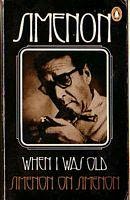 By 1971, it had become clear that Simenon was the most successful writer of crime fiction (in a language other than English) in the entire genre, and his character Maigret had become as much of an institution as the author. Simenoncreated something of a stir with his autobiography in 1971, Quand J'étais Vieux (When I was Old), in which hemade his controversial claim that he had had sexual relations with over 20,000 women. This astonishing claim was met with both scepticism (how had he managed to be such a prolific author if his entire time seems to have been spent in libidinous pursuits?) as well as a certain distaste at what seemed like boastfulness.
By 1971, it had become clear that Simenon was the most successful writer of crime fiction (in a language other than English) in the entire genre, and his character Maigret had become as much of an institution as the author. Simenoncreated something of a stir with his autobiography in 1971, Quand J'étais Vieux (When I was Old), in which hemade his controversial claim that he had had sexual relations with over 20,000 women. This astonishing claim was met with both scepticism (how had he managed to be such a prolific author if his entire time seems to have been spent in libidinous pursuits?) as well as a certain distaste at what seemed like boastfulness.
But leaving such things aside, by the time of his death in 1989, it was clear that the author had created a writing legacy quite as substantial as many more ‘serious’ French literary figures. And Simenon now seems like the Trojan horse for the explosion of interest in foreign crime writing that has taken place in both England and America.
The Georges Simenon novels that can be described as stand-alones (i.e. books in which no continuing detective figure features) are among the most powerful in the genre. But there is absolutely no debate as to which of his creations is most fondly remembered: the pipe-smoking French Inspector of Police, Jules Maigret.
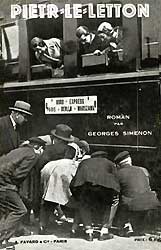 The detective first appeared in the novel (The Case of Peter the Lett) in 1930, and the author has stated that he utilised characteristics that he had observed in his own great-grandfather. Almost immediately, all the elements that made the character so beloved were quickly polished by the author: Commisaire in the Paris police headquarters at the Quai des Orfèvres, Maigret is a much more human figure than such great analytical detectives as Conan Doyle's Sherlock Holmes, and his approach to solving crimes is usually more dogged and painstaking than the inspired theatrics of other literary detectives.
The detective first appeared in the novel (The Case of Peter the Lett) in 1930, and the author has stated that he utilised characteristics that he had observed in his own great-grandfather. Almost immediately, all the elements that made the character so beloved were quickly polished by the author: Commisaire in the Paris police headquarters at the Quai des Orfèvres, Maigret is a much more human figure than such great analytical detectives as Conan Doyle's Sherlock Holmes, and his approach to solving crimes is usually more dogged and painstaking than the inspired theatrics of other literary detectives.
What Simenon introduced that was new in the field of detective fiction was to make his protagonist a quietly-spoken observer of human nature, in which the techniques of psychology are focused on the various individuals he encounters (both the guilty and the innocent). Interestingly, Simenon also gave his protagonist an almost ecclesiastical function, in which his job is to actually make peoples’ lives better (although this usually involves the tracking down and punishing of a clever and devious criminal).
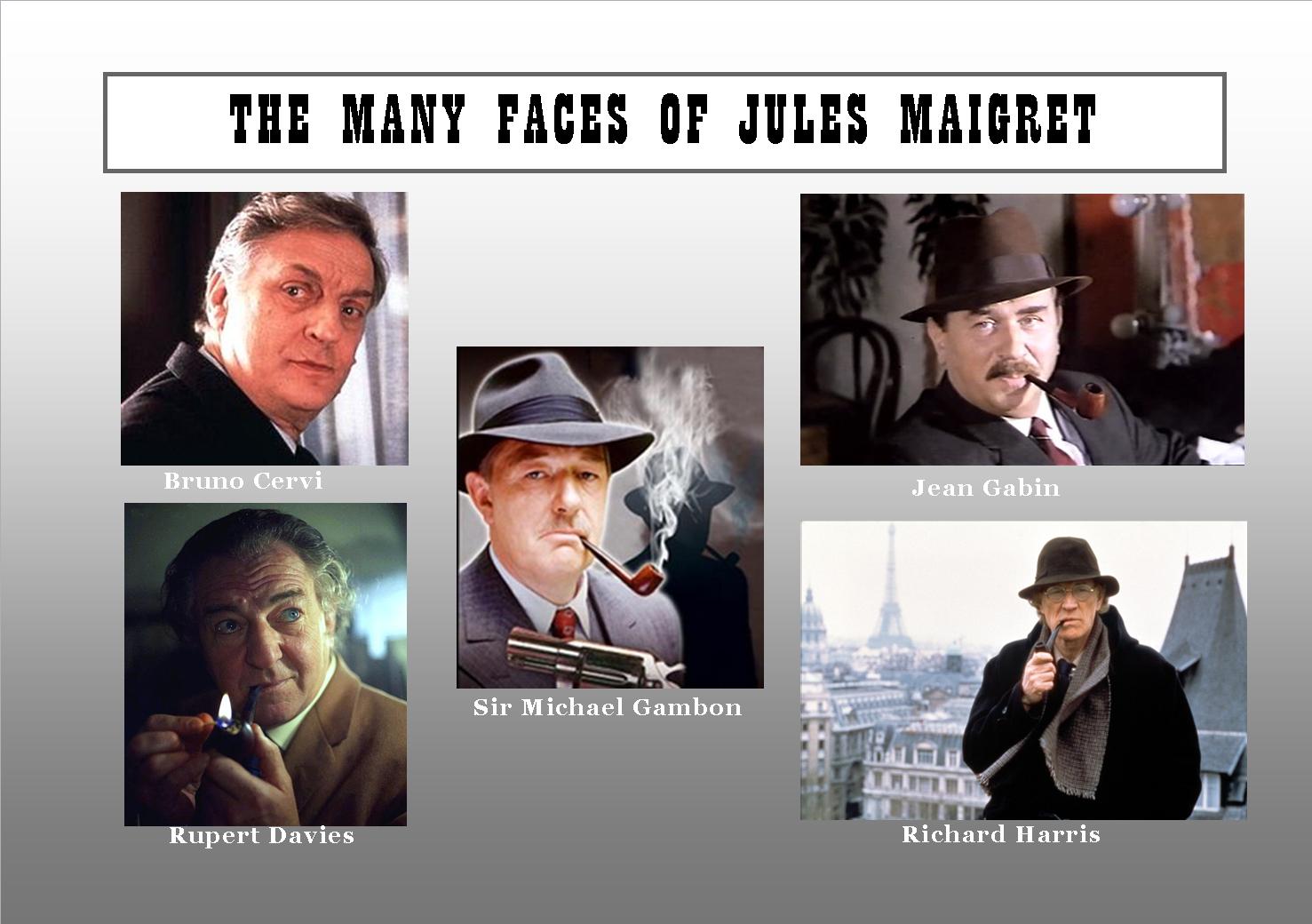
Along with this concept of doing some good in society, Simenon decided that Maigret had initially wished to become a doctor, but could not afford the necessary payments to achieve this goal. He also had Maigret working (early in his career) in the vice squad, but with little of the moral disapproval that was the establishment view of prostitution at the time (Madame de Gaulle famously sought -- in vain -- to have all the brothels in Paris closed down). Maigret, with his eternal sympathy for the victim, saw these women in that light and remained sympathetic, even in the face of dislike and distrust from the girls themselves (in one episode in the Michael Gambon series, Maigret and the Hotel Majestic, the detective has to deal with a prostitute (played by Toyah Wilcox) who meets his attempts at understanding with a violent physical attack -- Maigret is left with scratchmarks across his face for the remainder of the episode).
Whereas modern coppers such as Ian Rankin's Inspector Rebus are rebellious mavericks, eternally at odds with their superiors and battling such indulgences as alcoholism, Maigret is a classic example of the French bourgeoisie, ensconced in a contented relationship with his wife. There is no alcoholism, but rather an appreciation of fine wines -- and, of course, a cancer-defying relationship with a pipe (the sizeable pipe collection on his desk rivals Holmes’ violin as a well-known detective accoutrement).
André Gide famously described Simenon as ‘the greatest French novelist of our times’. Hyperbole, perhaps, but as a picture of French society, the Maigret books collectively create a fascinating panoply. There’s social criticism in here, as well -Maigret is always searching for the reasons behind crime, and sympathy is as much one of his qualities as his determination to see justice done.
cheat on husband
online married men who cheat
read
go which is better chalis or viagra
i dreamed my husband cheated on me
click here website
i cheated on my husband with his best friend
blog.e-lecta.com is it my fault my husband cheated
celecoxib pill
link temovate 0.05%
can i take amitriptyline with hydrocodone
link can i take amitriptyline with hydrocodone
naprosyn 750 mg
click naprosyn jel nedir
viagra ersatz
read viagra generika
medical abortion pill
akum.org abortion pill price
acetazolamide 250 mg tablets
acetazolamide acetazolamide blood brain barrier
naltrexone alcohol side effects
open buy naltrexone